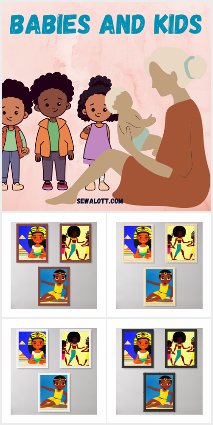Introduction
Juneteenth is about freedom—but it’s also about truth. It’s about telling the real story, not just the neat, edited version that makes us comfortable. Freedom without truth is fragile. And one truth that rarely gets told is the surprising connection between African Americans and the African nation of Liberia. This isn’t just a story about geography—it’s a story about forced migration, survival, resilience, and the power dynamics of who gets to write history.
If history were taught in its truest form, perhaps the White House would not have been so surprised recently about how well some Africans from Liberia speak English. The reality is, there’s a very clear reason why many Liberians speak English fluently and why so many of them carry American-sounding names. And while we’re at it, have you ever taken a close look at the Liberian flag? The resemblance to the American flag is undeniable—stars, stripes, and all. None of this is a coincidence.
Liberia, an independent African nation today, began its life as an American colony. It wasn’t just any overseas project—it was a calculated plan funded by the American Colonization Society, whose purpose was to send free African Americans and formerly enslaved people to Africa. In short, it was forced colonization under the guise of “opportunity,” and it left a complicated legacy that still shapes Liberia today.
In the beginning, things were far from easy. The settlers sent to Liberia were African Americans who, after generations in the United States, no longer spoke African languages, knew African customs, or had an intimate understanding of African societies. Imagine trying to “repatriate” white Americans to their European ancestral homelands after centuries in America—they’d be strangers in a strange land. These new Liberians were essentially cultural foreigners to the African continent, and the adjustment was anything but smooth.
The U.S., however, provided backing and support—financially, politically, and in resources. Over time, with persistence and determination, the small colony carved out on the West African coast began to survive, and eventually, to flourish. The relationship between the African American settlers and the indigenous peoples of the region was tense at first, but necessity and shared goals gradually built a foundation for cooperation.
If history were taught accurately in classrooms, Americans wouldn’t be puzzled about why Liberians speak English so well. Nor would they be surprised that Liberia’s capital, Monrovia, is named after U.S. President James Monroe. But here’s the trouble—when the historians who write the textbooks and the clergy who teach biblical history alter the truth, the public gets a distorted version of reality. And when the powerful control the printing presses, they can make sure the stories told fit their preferred narrative, even if that means inserting people into places they never historically existed.
The American Colonization Society itself was a strange mix of motivations. Some of its members were slaveholders who feared that free African Americans would inspire those still in bondage to rebel. Others were slave traders who wanted the Black population in America restricted only to those they could profit from selling. And then there were the well-meaning abolitionists, who, despite opposing slavery, believed that the only place African Americans could truly live free was in Africa.
A surprising fact to many: Confederate General Robert E. Lee—yes, that Robert E. Lee—helped finance the trips of some enslaved people he owned who wanted to go to Liberia. Over time, despite their rocky start, the settlers and the local Africans began to cooperate for mutual benefit. This cooperation eventually transformed the fledgling colony into a sovereign nation.
By 1847, Liberia declared its independence. And in designing their national flag, they made a clear nod to the country that had both displaced and created them—the United States. The Liberian flag’s red and white stripes, blue field, and single white star stand as a reminder of its American colonial origins.
Today, Liberia is unique on the African continent. Its official language is English. Many of its surnames—Johnson, Roberts, Jackson—echo American roots. And its flag, history, and political institutions bear the imprint of a country an ocean away. This shared history is an uncomfortable but undeniable part of both American and African heritage.
Conclusion
Juneteenth reminds us that freedom was fought for, not gifted. But it also reminds us that the fight for truth is just as important. The story of Liberia is proof that history is often more connected, more complex, and more revealing than the versions we’re handed in school. By telling it in full—without edits, without omissions—we honor not just those who lived it, but those still seeking freedom today. Because when we know the truth, we can see the ties that bind us… even across oceans.

📜 Did You Know? Liberia’s American Connection
- Flag Twins: Liberia’s national flag has red and white stripes, a blue square in the corner, and a white star—closely modeled after the U.S. flag. The single star represents Liberia as Africa’s first independent republic.
- Presidential Namesake: Liberia’s capital city, Monrovia, is named after U.S. President James Monroe, a strong supporter of the American Colonization Society.
- American English: English is Liberia’s official language, a legacy of its founding by African Americans and free Blacks from the United States.
- Familiar Last Names: Many Liberians carry surnames like Johnson, Roberts, and Jackson—remnants of their American heritage.
- Shared History: Liberia declared independence in 1847, making it the oldest republic on the African continent.

🔍 Discover More Hidden History
The story of Liberia is just one of many connections between African American history and the wider world. Our Juneteenth Handbook Blog is dedicated to uncovering the stories that textbooks skip—stories that change how we see our past, our culture, and our future.
Explore More Stories

.png)


.png)


.png)



.png)


.png)


.png)



